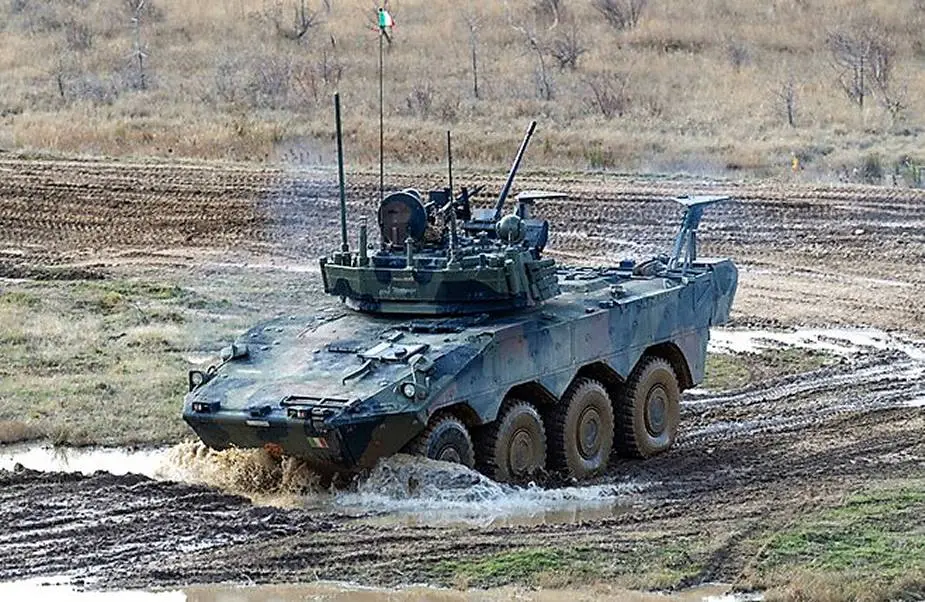Breaking news
NATO multinational battlegroup in Bulgaria reaches full capability.
NATO’s multinational battlegroup in Bulgaria reached full operational capability on Wednesday, 14 December 2022. The milestone was marked by a ceremony presided over by Bulgaria’s Chief of Defence, Admiral Emil Eftimov, and the Commander of Italy’s Joint Operations Command, Lieutenant General Francesco Paolo Figliuolo.
Follow Army Recognition on Google News at this link

Allies are committed to deploying robust and combat-ready forces on the Alliance’s eastern flank. The eight battlegroups demonstrate the strength of the transatlantic bond and the Alliance’s solidarity, determination and ability to respond to any aggression. (Picture source: NATO)
Just days after Russia’s full-scale invasion of Ukraine, the battlegroup was established in Kabile on 1 March, on the basis of the Bulgarian Land Forces’ 42nd Mechanized Battalion. Italy assumed the role of framework nation in mid-October, contributing some 740 personnel from the infantry regiment “Torino”, under the command of Colonel Francesco Alaimo. The total strength of the battlegroup is over 1,000 troops, provided by host country Bulgaria, as well as by Albania, Greece, Italy, the Republic of North Macedonia, and the United States. Montenegro is also scheduled to deploy personnel in early 2023.
Since Russia’s illegal annexation of Crimea in 2014, NATO has implemented the largest reinforcement of its collective defence in a generation, enhancing its ability to defend all Allies on land, at sea, in the air, in cyberspace, and in space. In response to Russia’s invasion of Ukraine, NATO has stepped up again, including with eight multinational battlegroups from the Baltic Sea to the Black Sea – one each in Bulgaria, Estonia, Hungary, Latvia, Lithuania, Poland, Romania, and Slovakia. These battlegroups are multinational and combat-ready. They demonstrate the strength of the transatlantic bond, and their presence makes clear that an attack on one Ally would be considered an attack on the whole Alliance (article 5 of the Treaty).
An important component of NATO’s deterrence and defence posture is military presence in the eastern part of Alliance territory. In recent years, Allies have enhanced NATO’s forward presence by establishing multinational battlegroups in Bulgaria, Estonia, Hungary, Latvia, Lithuania, Poland, Romania and Slovakia. They have also sent more ships, planes and troops to NATO’s eastern flank, from the Baltic Sea in the north to the Black Sea in the south. These actions demonstrate Allies’ solidarity, determination and ability to defend Alliance territory and populations.
NATO has increased its military presence in the eastern part of the Alliance as a direct result of Russia’s behaviour, which reflects a pattern of aggressive actions against its neighbours and the wider transatlantic community. Russia is the most significant and direct threat to Allies’ security and to peace and stability in the Euro-Atlantic area.
At the 2016 NATO Summit in Warsaw, in response to the increased instability and insecurity along NATO’s periphery, Allied Heads of State and Government agreed to establish NATO’s forward presence in the northeast and southeast of the Alliance.
This forward presence was first deployed in 2017, with the creation of four multinational battalion-size battlegroups in Estonia, Latvia, Lithuania and Poland, led by the United Kingdom, Canada, Germany and the United States respectively. In the southeast, a tailored presence on land, at sea and in the air contributed to increased Allied activity in the region, enhancing situational awareness, interoperability and responsiveness.
Following Russia’s full-scale invasion of Ukraine in February 2022, Allies reinforced the existing battlegroups and agreed to establish four more multinational battlegroups in Bulgaria, Hungary, Romania and Slovakia. This has brought the total number of multinational battlegroups to eight, effectively doubled the number of troops on the ground and extended NATO’s forward presence along the Alliance’s eastern flank – from the Baltic Sea in the north to the Black Sea in the south.
Allies are committed to deploying robust and combat-ready forces on the Alliance’s eastern flank. The eight battlegroups demonstrate the strength of the transatlantic bond and the Alliance’s solidarity, determination and ability to respond to any aggression.
At the 2022 NATO Summit in Madrid, Allies agreed to enhance the multinational battlegroups from battalions up to brigade size, where and when required.
Many activities undertaken by Allies nationally also contribute to increased Allied activity in the eastern part of the Alliance. In response to Russia’s full-scale invasion of Ukraine, the Allies have sent additional ships, planes and troops to NATO territory in eastern Europe, further reinforcing the Alliance’s deterrence and defence posture.

























